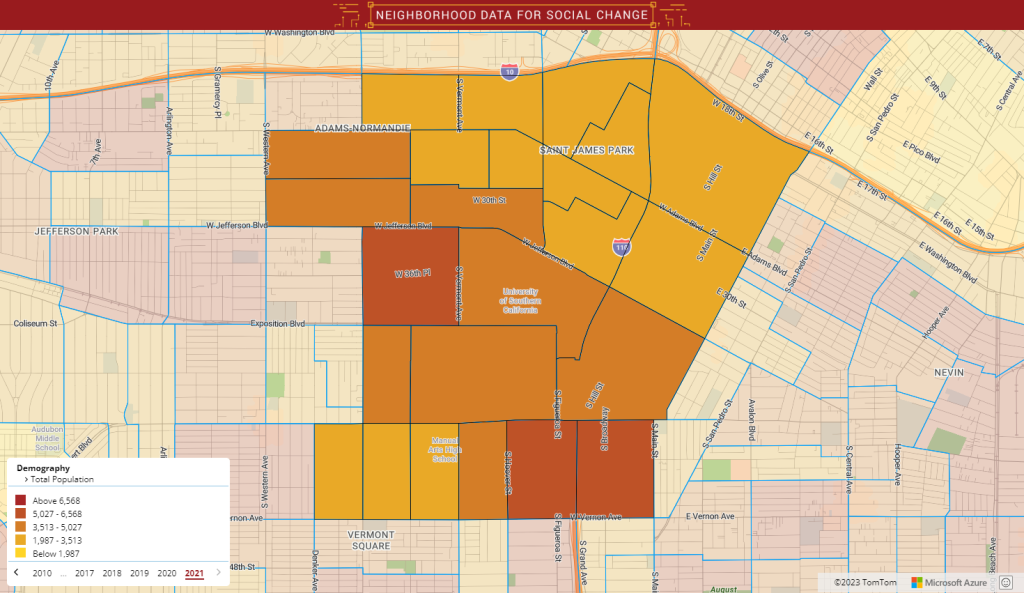Resident Characteristics
KEY INSIGHTS
- The share of people who identify as Black/African American in the USC area fell from 24% in 1990 to 13% in 2019, the only racial/ethnic group to experience a decrease in population size during that period.
- Over the last decade, the share of households in the USC area making over $100,000 in annual income has more than doubled, while the share of households making under $30,000 has decreased by 10 percentage points.
- The overall population size in the USC area has remained relatively stable over the last three decades, increasing slightly from 673,000 in 1990 to 686,000 in 2019.
Household Income Groups
Key Takeaways
- Over the last decade, the share of households in the USC area making over $100,000 has more than doubled while the share of households making under $30,000 has decreased by 10 percentage points. This indicates a changing population around USC, with significant growth in the proportion of USC area residents that are making an income of greater than $60,000 per year, as lower-income residents become a much smaller proportion of the population. While the trends in income and shifting populations are similar in the larger City of Los Angeles, they are more pronounced in the USC area.
Race/Ethnicity & Population Size
Key Takeaways
- People who identify as Latino/a have consistently made up the largest share of the USC area resident population across the last three decades, representing just over 60% of the population.
- The share of the people who identify as Black/African American fell from 24% in 1990 to 13% in 2019 – the only racial/ethnic group to experience a decrease in population size in the neighborhood.
- The share of people who identify as Asian in the USC area grew from 4% in 1990 to 11% in 2019, the largest increase of any racial/ethnic group.
- The overall size of the resident population in the USC area has remained relatively stable over the last three decades, increasing slightly from 673,000 in 1990 to 686,000 in 2019.
To view additional information about resident characteristics in the USC Area, visit the Neighborhood Data for Social Change platform, select a dataset, and zoom into the selected area on the map.


